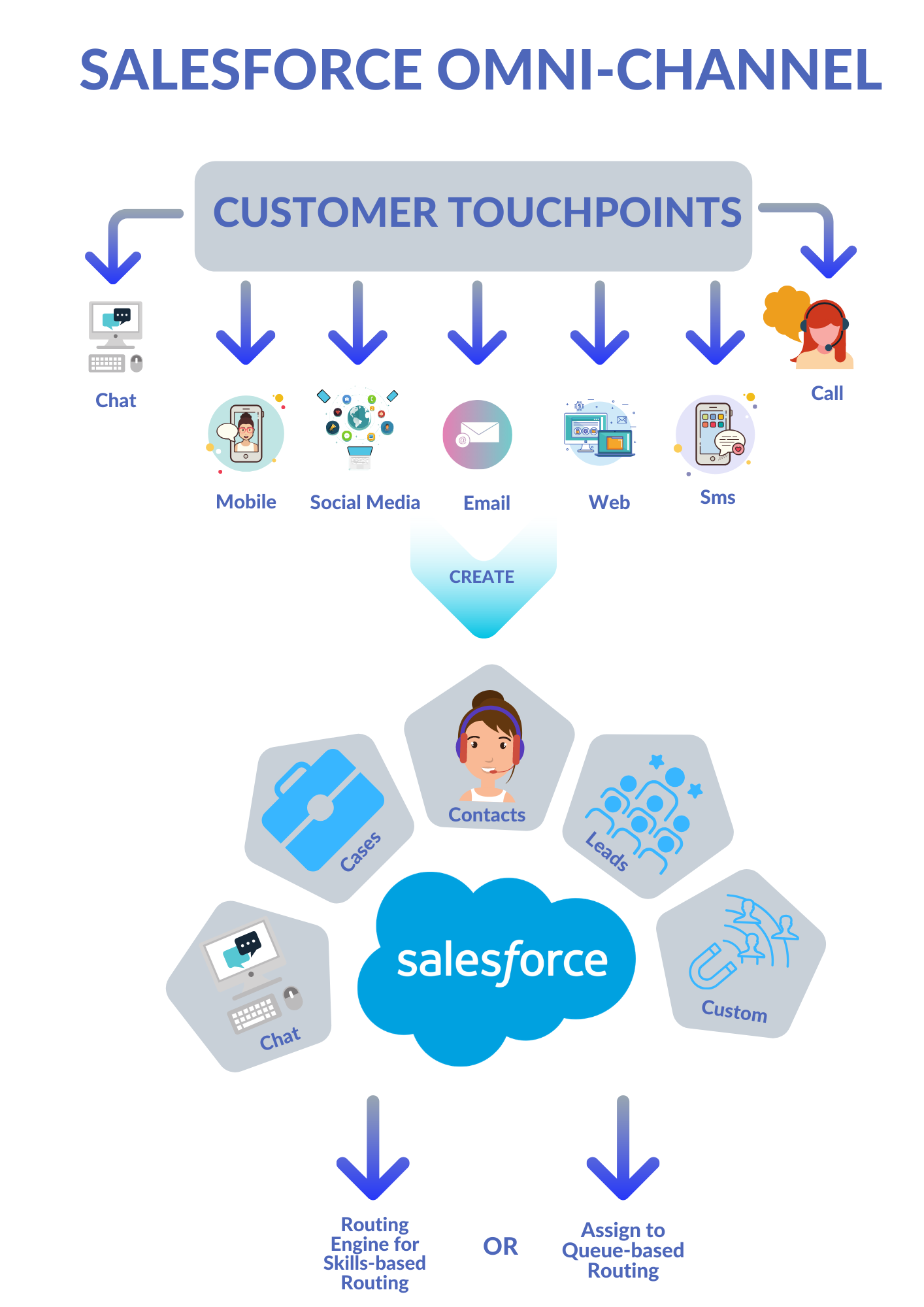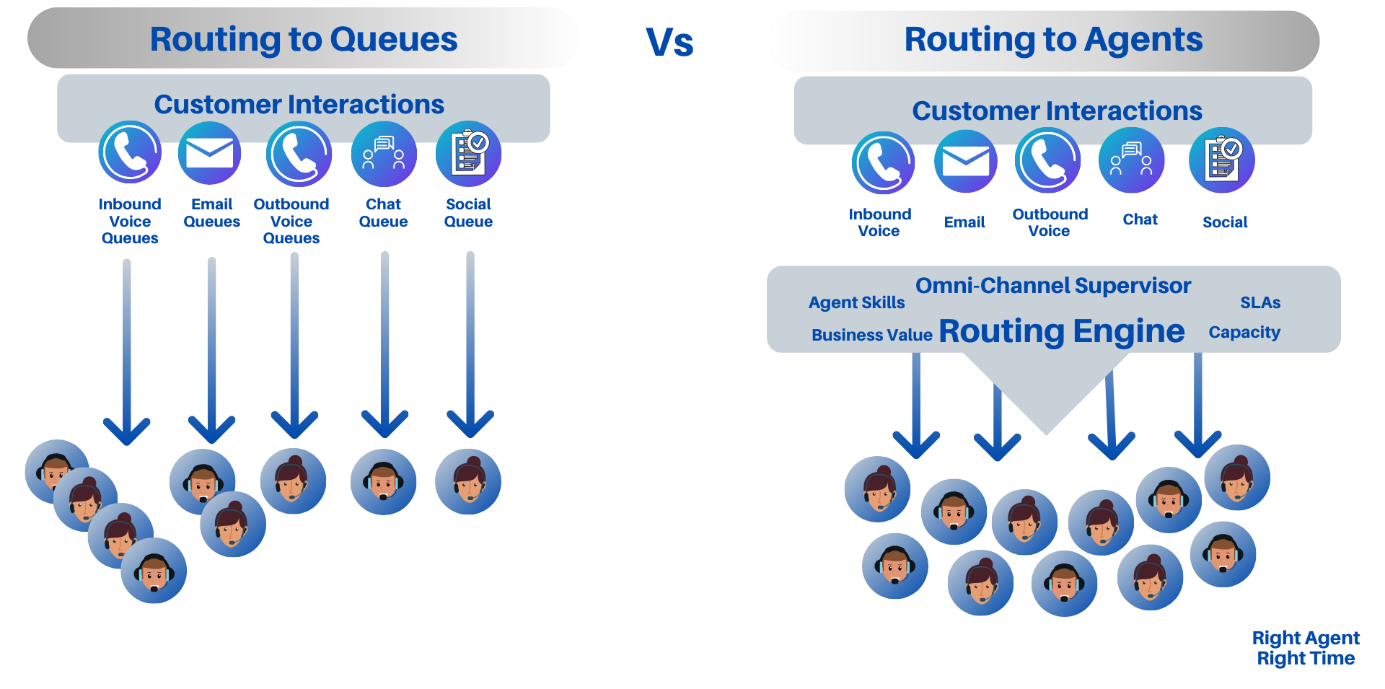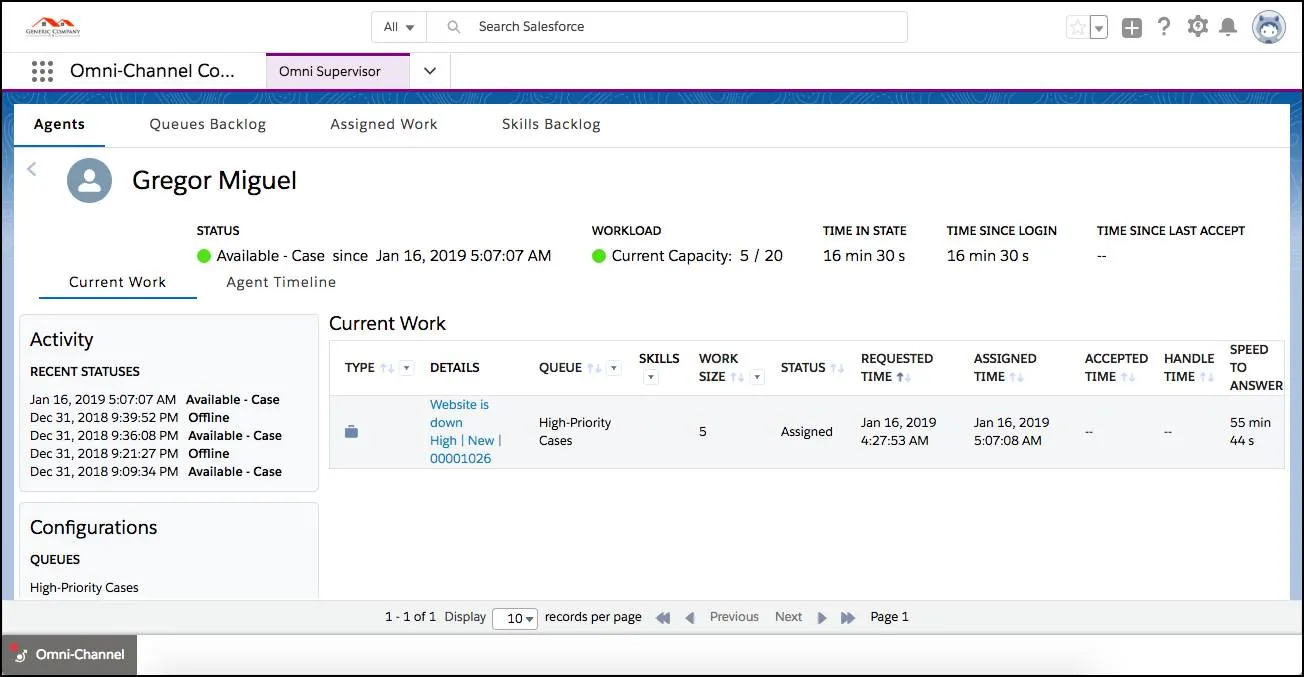Table of Contents
Customer expectations are higher than ever. Nearly half of all customers (46%) desire responses to their queries within four hours, emphasising the importance of prompt and efficient case handling.
Yet, for businesses juggling interactions on your customer’s preferred channels, like email, phone support, social media, WhatsApp, and beyond, the challenges can be overwhelming.
Fragmented communication, inefficient case distribution, and mismatched expertise are common pain points that hinder agent’s productivity and customer satisfaction. These issues aren’t just logistical; they directly impact customer loyalty and business growth. Providing high-quality customer service can lead 88% of customers to repeat purchases, demonstrating the value of assigning support requests to the most suitable teams.
01
of 11
Problem 1: Fragmented interactions and tracking issues
Customers use an average of 5.6 channels to contact companies. Over 75% of people have trouble switching between these channels.
Your support requests and questions come through many channels. These include the web, email, WhatsApp, phone, and social media. Let’s be real, it’s getting harder and harder to keep track of everything, right?
02
of 11
Problem 2: First-come, first-serve inefficient case distribution
Assigning cases without considering agent expertise can lead to inconsistent service quality. Standardising response protocols and training are essential to maintain consistency across channels.
If cases are given out on a first-come, first-serve basis, they may not go to the best agent. The best agent should be chosen based on their skills and expertise.
03
of 11
Problem 3: Struggling with Product-Specific Support
Your company offers a variety of products, and you want to assign incoming support requests for each product to the most suitable team.
But what if there were a way to turn this chaos into clarity with a multi channel support?
Enter Salesforce Omnichannel communication—a solution designed to unify and streamline multi-channel to interact with customers. By adopting this approach, businesses can not only overcome these challenges but also unlock opportunities for stronger relationships, better service, and sustained success.
If your company is facing any of these three challenges, it may be time to consider a multi-channel CRM solution.
An omnichannel approach to customer interactions can strengthen loyalty, improve response times, and deliver a seamless, enhanced experience that keeps customers coming back.
04
of 11
What is Omni-Channel and Its Purpose?
Omni-Channel is a Salesforce product that centralises all communication channels into a single interface.
It enables agents to seamlessly handle incoming cases, whether they arrive via phone, email, chat or a social media platform. By routing cases to the most qualified agents, Omni-Channel ensures timely and effective resolution.
05
of 11
Case Management Use Cases
It’s essential to understand how Salesforce Omni-Channel’s routing mechanisms, such as Queue-Based Routing, Skills-Based Routing and External Routing, optimise the handling of cases. These intelligent routing systems ensure that each case is assigned to the right agent or team, enhancing efficiency and improving customer satisfaction.
Queue-Based Routing
Omni-Channel automatically distributes cases to specific queues based on predefined criteria, such as product type, issue severity, or customer segment.
By assigning cases to the appropriate queues, agents can focus on their areas of expertise, leading to faster resolution times and higher customer satisfaction.
Figure 1 illustrates the concept of Salesforce Omni-Channel support, a system designed to manage customer touchpoints across multiple communication channels seamlessly.
At the top, we see the various communication channels customers can use to interact with the company. All interactions from these channels are funnelled into Salesforce, where they are consolidated into cases, contacts, leads, or custom records, depending on the nature of the interaction.

Image 1. What is Omni-Channel Salesforce?
Skills-Based Routing
Omni-Channel streamlines the assignment of incoming cases by matching them with agents who possess the necessary skills, expertise, and availability to resolve the issue effectively.
This approach ensures timely, personalised, and high-quality support while optimising the distribution of expertise across the team.
External Routing
Omni-Channel also seamlessly integrates with external routing systems, allowing for complex routing scenarios and leveraging existing infrastructure.
External routing enables organisations to adapt to changing business needs and implement customised routing strategies.
06
of 11
In-Depth look at Queue-Based Routing Vs Skills-Based Routing
While queue-based routing is effective for simpler scenarios, skills-based routing offers a more sophisticated approach to match cases with the most qualified agents.
This method is particularly beneficial for organisations with diverse product offerings, multilingual customer bases, or complex support requirements.

Image 2. Queue-Based vs. Skills-Based Routing (OmniChannel Customer Journey)
Queue-Based Routing
Queue-based routing (left-side) allows you to assign different types of customer interactions—such as calls, emails, or chats—to specific queues.
As an example, calls can be routed to the “Calls Queue,” ensuring that agents specialising in handling phone interactions are focused on this channel while emails can go to an “Email Queue”.
Agents can be assigned to one or multiple queues depending on your operational needs. When using the previous example, agents may be assigned to the “Calls Queue” and the “Email Queue” in which case, after clearing all calls, an agent could shift to handling emails.
A key benefit of queue-based routing is the ability to control the priority of queues. If multiple queues have pending requests, you decide which queue takes precedence—giving you full control over workload distribution.
Skills-Based Routing
In a skills-based routing (right side) configuration, Salesforce uses agent skills to assign customer requests dynamically.
Skills might include “Language Proficiency”( i.e. agents fluency in Spanish or French), “Product Expertise” (i.e. knowledge of specific products or services), “Technical Skills”(such as troubleshooting or managing complaints) or even “Compliance and Certifications” (for interactions requiring special credentials, such as compliance with legal standards).
Each agent can be tagged with a combination of these skills, and Salesforce’s routing engine ensures that the customer request is matched to the best-fit agent based on skill relevance, availability, and priority.
Configuration Flexibility and Benefits
Both strategies offer extensive configuration options to suit your business needs and no matter which strategy you use, Salesforce guarantees that customer requests are assigned efficiently based on your predefined criteria for priority, agent availability, and matching rules.
07
of 11
How to Set Up Skills-Based and Queues-Based Routing
To implement either of these configurations, you’ll need to follow these steps:
Define Skills or Queues
Identify the essential skills or queues required to handle different types of cases, such as language proficiency, technical expertise, or in the case of queues, calls or emails.
Assign Skills or Queues to Agents
Assign appropriate skills to each agent based on their qualifications and experience.
Create Routing Rules
Establish rules that map specific case attributes (e.g., product type, language, issue severity) to required skills or queues.
Enable your Routing Choice in Configurations
Activate skills-based or queue-based routing to ensure that cases are routed according to the defined rules.
08
of 11
Benefits of Skills-Based Routing
By implementing skills-based routing, you can achieve the following benefits:
Improved Customer Satisfaction
By connecting customers with agents who have the appropriate expertise, issues are resolved more efficiently, leading to higher customer satisfaction.
Increased Agent Productivity
When agents handle cases that align with their skills, they can work more efficiently, reducing training time and enhancing overall productivity.
Optimised Resource Allocation
Skills-based routing ensures that customer inquiries are directed to the most suitable agents, allowing businesses to allocate resources effectively and reduce operational costs.
Enhanced First-Contact Resolution
By matching customers with agents who possess the necessary skills, issues are more likely to be resolved during the initial interaction, reducing the need for multiple contacts.
09
of 11
Optimise your Call Center with Omni-Channel Supervisor
In addition to streamlined routing functionalities, Omni-Channel empowers supervisors and managers with a powerful tool: Omni-Channel Supervisor. Image 3. Omni-Channel Supervisor Dashboard
Image 3. Omni-Channel Supervisor Dashboard
This comprehensive dashboard provides a real-time view of your contact centre’s operations, enabling proactive management and data-driven decision-making.
Omni-Channel Supervisor eliminates the need for supervisors to juggle multiple reports and dashboards.
Key metrics like wait times, handle times, and agent workload are displayed at a glance, providing a clear understanding of your contact centre’s health.
Beyond the overview, Omni-Channel Supervisor allows supervisors to delve deeper into specific areas, such as:
- Monitoring agent performance by analysing individual agent activity, including status changes, current work, and time spent handling cases.
- Assessing queue performance by gaining insights into queue backlog, wait times, and staffing levels for informed resource allocation.
- Tracking work distribution by monitoring the assignment of work items and identifying potential bottlenecks or workload imbalances.
One of the key strengths of Omni-Channel Supervisor is its real-time data updates. Supervisors can watch as agents take on and finish tasks. This removes the need for manual updates and keeps everyone informed with the latest information.
This allows them to react quickly to evolving situations and make data-driven adjustments as needed.
10
of 11
Benefits of Omni-Channel Supervisor
By leveraging Omni-Channel Supervisor, contact centers can achieve several significant benefits:
Improved Agent Productivity
Real-time insights allow supervisors to identify and address workload imbalances, ensuring optimal agent utilisation.
Enhanced Customer Satisfaction
Proactive management of queues and resources leads to faster resolution times and improved customer experiences.
Data-Driven Decision Making
Supervisors gain access to valuable data that can inform strategic decisions related to staffing, resource allocation, and process improvements.
Increased Operational Efficiency
Real-time monitoring allows for proactive identification and resolution of potential issues, minimising disruptions and improving overall efficiency.
By combining queue-based or skills-based routing with the comprehensive monitoring capabilities of Omni-Channel Supervisor, your company can establish a balanced and efficient contact centre operation.
11
of 11
How to Configure and Tailor Omni-Channel to your Needs
Stellaxius is a trusted Salesforce Partner with more than 16 years of experience. We are 100% dedicated to the #1 CRM in the world, Salesforce.
Our team of experienced Salesforce consultants can help you maximise the benefits of Omni-Channel by:
- Designing and implementing customised Omni-Channel solutions to address your unique business requirements.
- Providing seamless integration, configuration, and ongoing support to ensure optimal performance.
- Analysing performance metrics and making data-driven adjustments to optimise your Omni-Channel strategy.
With Stellaxius’s help, you can empower your customer service support team to deliver exceptional support, increase agent productivity, and drive customer satisfaction. We focus on discovery and envisioning, iterative configuration, validation and adaptation, and, finally, training and adoption.
We will help you customise various parameters to tailor the solution to your specific business needs, including:
- Defining optimal caseloads to prevent agent burnout and ensure efficient case handling.
- Configuring skill sets and proficiency levels to accurately match agents with incoming cases.
- Creating sophisticated routing rules to prioritise cases and distribute them effectively.
- Monitoring key performance indicators (KPIs) to gain insights into agent performance and customer satisfaction.







